| [1] 曾筱茜,王婷立,付平.地震挤压伤中急性肾损伤的临床特征分析[J].西部医学, 2014,26(6):715-718.[2] 潘鑫,邹圣强.挤压综合征研究进展[J].中国急救复苏与灾害医学杂志, 2014,9(8):764-766.[3] 高阳,樊毫军,刘子泉,等.肢体挤压时长与急性肾损伤关系的动物实验研究[J].中国急救复苏与灾害医学杂志, 2015,10(8):712-715.[4] Tang Y, Gan X, Cheheltani R, et al. Targeted delivery of vascular endothelial growth factor improves stem cell therapy in a rat myocardial infarction model. Nanomedicine. 2014;10(8):1711-1718.[5] Atashi F, Modarressi A, Pepper MS. The role of reactive oxygen species in mesenchymal stem cell adipogenic and osteogenic differentiation: a review. Stem Cells Dev. 2015;24(10):1150-1163.[6] Jeong H, Yim HW, Cho YS, et al. Efficacy and safety of stem cell therapies for patients with stroke: a systematic review and single arm meta-analysis. Int J Stem Cells. 2014;7(2):63-69.[7] Bruin JE, Saber N, Braun N, et al. Treating diet-induced diabetes and obesity with human embryonic stem cell-derived pancreatic progenitor cells and antidiabetic drugs. Stem Cell Reports. 2015; 4(4):605-620.[8] Morigi M, De Coppi P. Cell therapy for kidney injury: different options and mechanisms--mesenchymal and amniotic fluid stem cells. Nephron Exp Nephrol. 2014;126(2):59.[9] Ma T, Sun J, Zhao Z, et al. A brief review: adipose-derived stem cells and their therapeutic potential in cardiovascular diseases. Stem Cell Res Ther. 2017;8(1):124.[10] Tabatabaei Qomi R, Sheykhhasan M. Adipose-derived stromal cell in regenerative medicine: A review. World J Stem Cells. 2017;9(8): 107-117.[11] Saidi RF, Rajeshkumar B, Shariftabrizi A, et al. Human adipose- derived mesenchymal stem cells attenuate liver ischemia- reperfusion injury and promote liver regeneration. Surgery. 2014; 156(5):1225-1231.[12] Chen L, Qin F, Ge M, et al. Application of adipose-derived stem cells in heart disease. J Cardiovasc Transl Res. 2014;7(7):651-663.[13] 刘少鹏.脂肪干细胞(ASCs)在急性肾损伤(AKI)动物模型治疗中的作用研究进展[J].复旦学报(医学版),2014,41(3):400-404.[14] 郑凯,吴卫真,谭建明,等.骨髓间充质干细胞治疗兔挤压伤后急性肾损伤[J].中华创伤杂志,2015,31(2):173-175.[15] 张春梅,唐华,陈蓉,等.挤压综合征性肾损伤时HIF-1α变化及与肾血流量和血液流变学的关系的研究[J].现代预防医学, 2015,42(3):504-507.[16] 王捷荣,李咏梅.窒息性肾损伤新生儿尿神经生长因子-1、视黄醇结合蛋白、血肌酐水平变化的临床意义[J].中国临床医生, 2016,44(8): 90-92.[17] Sheashaa H, Lotfy A, Elhusseini F, et al. Protective effect of adipose-derived mesenchymal stem cells against acute kidney injury induced by ischemia-reperfusion in Sprague-Dawley rats. Exp Ther Med. 2016;11(5):1573-1580.[18] Yao W, Hu Q, Ma Y, et al. Human adipose-derived mesenchymal stem cells repair cisplatin-induced acute kidney injury through antiapoptotic pathways. Exp Ther Med. 2015;10(2):468-476.[19] Overath JM, Gauer S, Obermüller N, et al. Short-term preconditioning enhances the therapeutic potential of adipose- derived stromal/stem cell-conditioned medium in cisplatin-induced acute kidney injury. Exp Cell Res. 2016;342(2):175-183.[20] Tsuji W, Rubin JP, Marra KG. Adipose-derived stem cells: Implications in tissue regeneration.World J Stem Cells. 2014; 6(3):312-321.[21] 刘少鹏,俞小芳,钟一红,等.经肾动脉移植脂肪干细胞对大鼠急性缺血性肾损伤的治疗作用研究[J].中华肾脏病杂志, 2013,29(10):768-774.[22] Wu R, Tang S, Wang M, et al. MicroRNA-497 Induces Apoptosis and Suppresses Proliferation via the Bcl-2/Bax-Caspase9-Caspase3 Pathway and Cyclin D2 Protein in HUVECs. PLoS One. 2016;11(12): e0167052.[23] Jing D, Bai H, Yin S. Renoprotective effects of emodin against diabetic nephropathy in rat models are mediated via PI3K/Akt/GSK-3β and Bax/caspase-3 signaling pathways. Exp Ther Med. 2017;14(5):5163-5169.[24] 柏合,刘勇,李洪志,等.姜黄素对2型糖尿病肾病大鼠肾脏的保护作用探究[J].光明中医,2017,32(11):1575-1577.[25] 吴暄,郭义峰.肾脏损伤后成体干细胞修复的研究进展[J].中国医师杂志,2017,19(10): 1594-1598.[26] 马华林,徐莹,张蓉蓉,等.间充质干细胞对内毒素诱导急性肾损伤的作用[J].暨南大学学报(自然科学与医学版), 2017,38(3): 253-258.[27] 黄克静,黄婷,胡文兵,等.脂肪间充质干细胞对肾缺血再灌注损伤的保护作用[J].临床肾脏病杂志, 2017,17(2):115-119.[28] 汪娟,潘勇军,张杰. 人胎盘间充质干细胞条件培养基对急性缺血再灌注肾损伤的修复作用[J].创伤外科杂志, 2017,19(12): 924-928.[29] 习小庆,胡红林,邹丛,等.Tet-On调控NICD稳定表达的骨髓间充质干细胞治疗肾缺血再灌注损伤[J].中国组织工程研究, 2018,22(25): 4035-4040.[30] Lo CY, Weil BR, Palka BA, et al. Cell surface glycoengineering improves selectin-mediated adhesion of mesenchymal stem cells (MSCs) and cardiosphere-derived cells (CDCs): Pilot validation in porcine ischemia-reperfusion model. Biomaterials. 2016;74:19-30.[31] 刘倩,张玉静,刘静,等.脂联素与鼠脂肪干细胞移植治疗大鼠肾病综合征[J].中国组织工程研究, 2018,22(13): 2109-2113.[32] 汪九龄,何波,储瑞亮,等.大鼠急性脊髓损伤后肾脏的病理变化及其意义[J].中华创伤杂志, 2017,33(5):459-464.[33] 薛建新,李潇,贾瑞鹏,等.Ang-1基因转染的内皮祖细胞移植对大鼠肾脏缺血再灌注后的保护作用[J].国际泌尿系统杂志, 2017,37(5): 755-760.[34] 唐海林,王志刚,李巧,等.超声辐照微泡促骨髓间充质干细胞修复大鼠急性肾损伤的实验研究[J].中华医学超声杂志(电子版), 2015,12(8): 652-656.[35] 王志红,林芸,陈为民,等.骨髓间充质干细胞修复衰老大鼠肾脏损伤的研究[J].创伤与急诊电子杂志, 2016,4(4):191-195,199. |
.jpg)
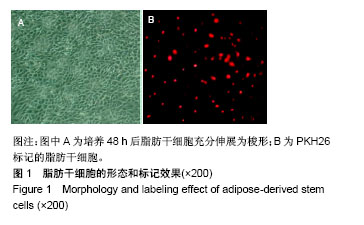
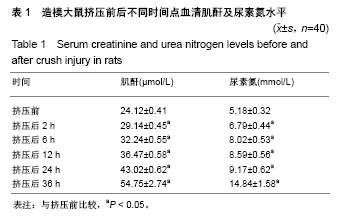
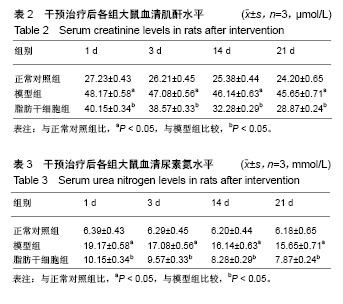
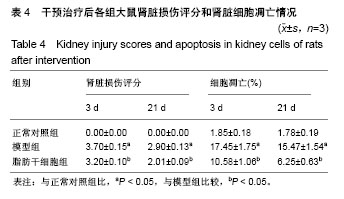
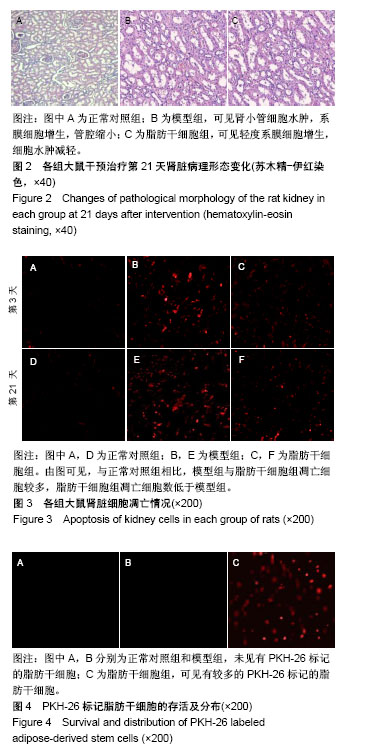

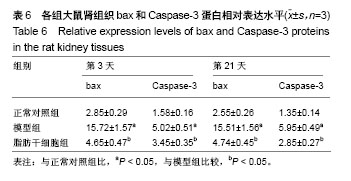
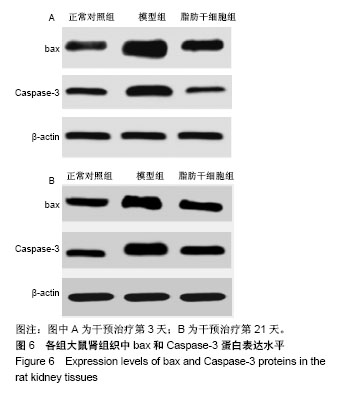
.jpg)